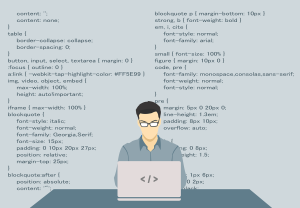Refactor Regularly: A Key Practice for Clean and Maintainable Code

Refactoring is the process of restructuring existing code without changing its external behavior. It’s an essential practice in software development that helps improve code quality, reduce technical debt, and enhance maintainability. Refactoring regularly is crucial for ensuring that your codebase remains clean, efficient, and scalable over time. In this article, we will discuss why regular refactoring is important and how it contributes to a healthier and more manageable codebase.
Why Refactoring is Important
Refactoring isn’t just about making code “look pretty”; it has a direct impact on the long-term success of a project. Over time, as software evolves, new features are added, and changes are made, the codebase can become messy and harder to understand. Without regular refactoring, you risk introducing bugs, slowing down development, and increasing the cost of maintenance. Here’s why refactoring is crucial:
1. Improved Code Readability
When code is well-structured and easy to understand, it’s easier for developers to maintain and extend. Refactoring helps clean up messy code, remove redundancies, and improve naming conventions, making it more readable and easier to follow. This leads to faster onboarding for new team members and reduces the chances of introducing errors during future updates.
2. Reducing Technical Debt
Technical debt is the accumulation of suboptimal decisions made during development, often due to time constraints or lack of proper design. Regular refactoring helps address technical debt by improving code quality, making it more efficient, and reducing the risk of future issues. This results in a more stable codebase, ultimately saving time and resources in the long run.
3. Easier Maintenance
As software grows and becomes more complex, maintaining it can become a daunting task. By refactoring regularly, developers can break down large, complex functions or classes into smaller, more manageable pieces. This makes it easier to maintain and debug, reducing the chances of introducing new bugs when making changes.
When Should You Refactor?
While refactoring is important, it shouldn’t be done haphazardly. Refactoring should be performed when certain conditions arise, such as:
- When a feature is being added or modified and the existing code is hard to understand or extend.
- When a bug is identified that could have been avoided with cleaner code.
- When performance issues are detected that can be resolved through better code structure.
But Be Cautious
Refactoring should be done with care. It’s important to ensure that existing functionality is not unintentionally broken. Always run tests before and after refactoring to verify that everything still works as expected. Additionally, refactoring should be incremental rather than a massive overhaul, allowing for easier tracking of changes and minimizing the risk of introducing new issues.
Best Practices for Regular Refactoring
To effectively refactor your codebase, consider the following best practices:
- Write Tests First: Before refactoring, make sure that there are comprehensive unit tests in place to catch any regressions.
- Refactor in Small Steps: Break down the refactoring process into small, manageable chunks to avoid overwhelming the codebase with large, sweeping changes.
- Focus on Readability and Simplicity: Strive to make your code as simple and readable as possible while maintaining its functionality.
Conclusion
Refactoring regularly is a vital practice for keeping your codebase clean, maintainable, and scalable. By prioritizing refactoring, developers can avoid technical debt, improve code readability, and make the software easier to maintain. Regular refactoring ensures that your code continues to evolve in a way that supports long-term success and allows your team to deliver high-quality software efficiently.